From August 2020 to April 2021, the Parisian teams of MPC Film & Episodic (formerly Mikros VFX) crafted 230 shots on Ridley Scott’s latest movie, The Last Duel. Kristina Prilukova (VFX Producer), Romain Bavent (Compositing Supervisor), Yann Blondel (VFX Supervisor), Christophe ‘Tchook’ Courgeau (Environment Supervisor) and Mark Robinson (CG Supervisor) share their experience on working on this epic historical drama movie.
How did you get involved on this movie?
Yann Blondel: I mainly work as an independent VFX Supervisor. When MPC Film & Episodic Paris proposed me this collaboration, you can imagine that I instantly agreed to work on a film directed by Ridley Scott and written/starred by Ben Affleck and Matt Damon!
Christophe ‘Tchook’ Courgeau: I was the Environment Supervisor on this film. I proposed a lot of concept design, mock-ups and art direction for all the shots that needed digital set or digital environment at an early stage of the post-production. We handled a lot of shots that needed digital matte painting and 2.5 environment.
Mark James Robinson: I had been working at Mikros group for a while by then, and was asked to handle the CG supervision of the project. The early stages of the project for me were spent setting things up, and putting a light planning of the team in place before slowly bringing people on to start pushing out some VFX.
Romain Bavent: I was the compositing supervisor. I was responsible for delivering all the final shots with different types of effects, from simple 2D clean-up shots to complex CG and DMP composites.
Kristina Prilukova: I was the VFX Producer on this show and was very thrilled when I got offered to work on this film. I read the script at quite an early stage and was looking forward to seeing the first edits.
What was your feeling to work with Legendary Director Ridley Scott?
Yann: As a kid I was blown away by Blade Runner. I was obviously really impressed by the photography and cinematography, but the depth of the story was what really struck me. This is the film that got me into filmmaking, and I started to consider filmmakers as people that can incarnate dreams into reality. I was really happy and felt humbled to have the chance to work for Ridley Scott. And I was even happier when I read the script!
Tchook: It was like a dream come true! He is one of my all-time favourite directors and he’s the reason why I engaged into the VFX industry.
Mark: It was very cool to work with someone as experienced as Ridley Scott. I grew up watching a load of his films, and so knew that the hard work we would be putting into the project would pay off. At the same time, it was a little daunting to know that he would be scrutinising all of our work!
Romain: It was obviously a great honour to play a small part in delivering the vision of such a legendary director. His work is always very visually sophisticated, so it was challenging to match his expectations.
Kristina: Ridley Scott always been one of the directors I wanted to collaborate with and it’s actually quite a special feeling when you realize that it’s happening for real. This is the moment when you just want to run around and scream with joy, but then you need to stay calm and professional, and often take some distance to make it work.
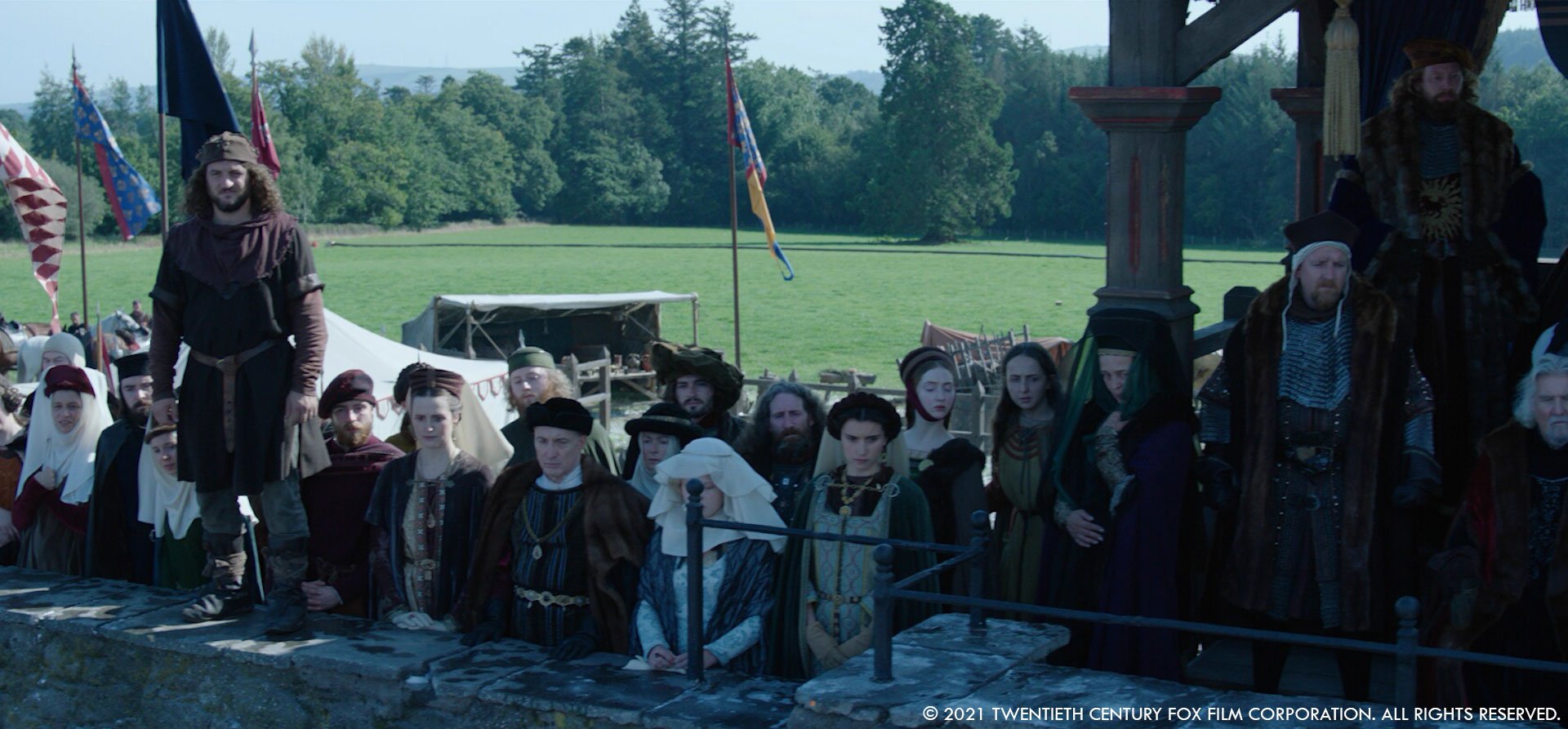
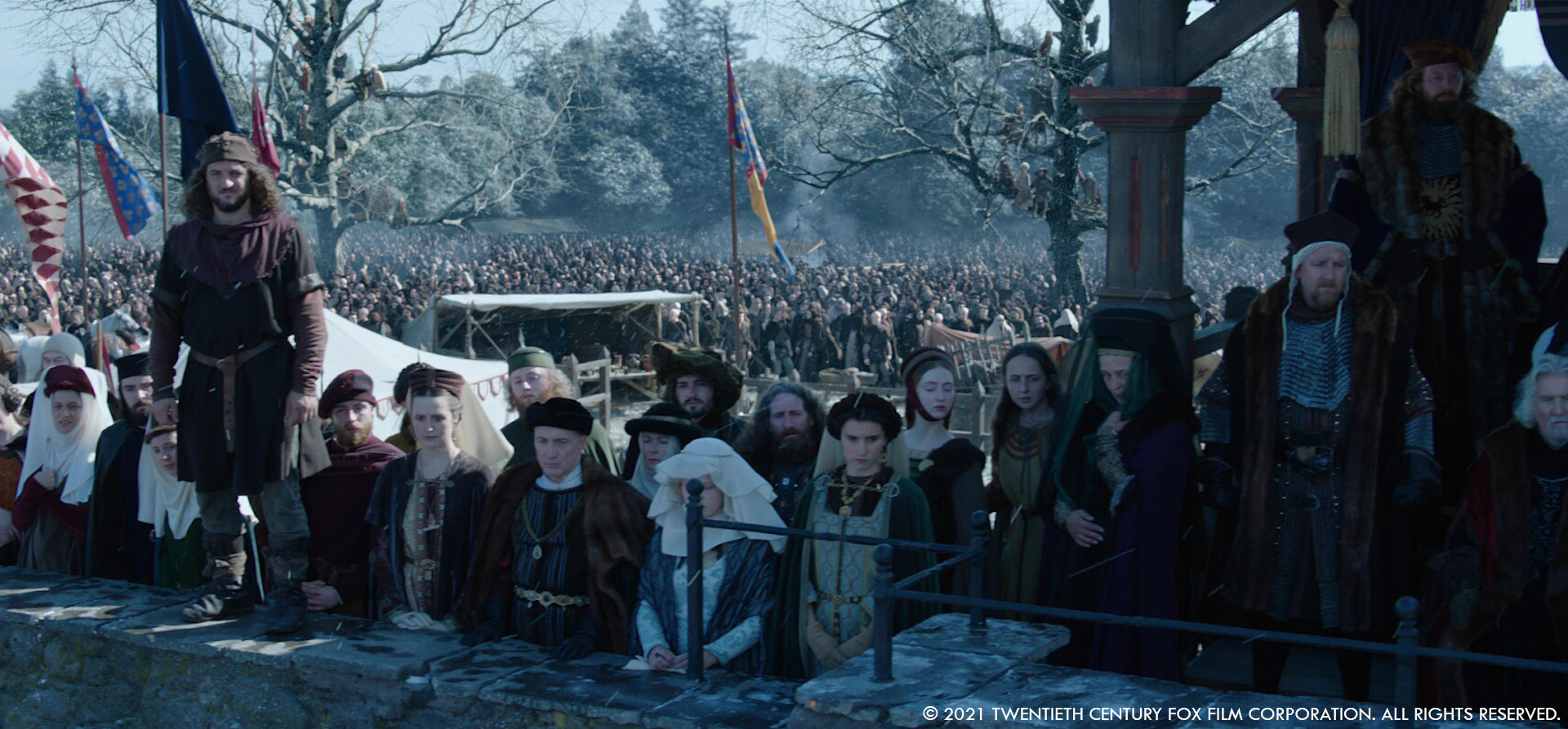
What was his approach and expectations about the visual effects?
Tchook : We had a lot of liberty, sometimes he gave us a drawing, sometimes we got the chance to suggest ideas, composition for the shots. His expectations were very high at start and became even higher as the post-production on the film was progressing.
Mark: He wanted to make a believable, real world, and so this always drove the images we were making. Yet he made sure that the way things were put together served the story above all. He was at times quite demanding, but we were always sure that the hard work we put in would serve the story as a whole.
Romain: He knew exactly the level of reality each shot needed to tell the story. On some shots he pushed things a bit just to make the shot even more clear and understandable. At some point we thought it was too much but each time, when we saw it in the cut, we could see his point. It always made sense in the big picture.
Kristina: I found that our exchanges were an interesting blend of direction and freedom. He always had a precise vision of how he wanted to serve his story, while leaving us enough space for the creative interpretation, especially during the concept phase. His expectations were very high, but this is exactly what you expect from Ridley Scott.
How did you organize with your VFX Producer?
Yann: Kristina is a talented VFX producer, and it was a pleasure to work with her. We reviewed each shot carefully, talked a lot, prepared a lot. We tried to be always in line and to agree on everything.
How did you create and extend the various castles?
Yann: That’s the good thing with France! There are a lot of beautiful castles, and we didn’t extend any castle! We had basically two cases:
– When the castle existed: we needed to get rid of anachronisms, add middle-age life to it, and sometimes add snow to make it look like winter. We gathered a lot of references, images, and measures and built a basic reconstruction. We used this reconstruction to track the shot. The Environment team painted a DMP of the snow that we projected using these same 3D volumes on the plate.
– When the castle didn’t exist: we created it from scratch, but always based on references with a mix of CGI and DMP.
Tchook: We got a lot of references from the set designer and we proposed some new design for some shots. We created rough shapes in Maya to be able to place them in the shot in a way that matched the right lens feeling. Then we used Substance painter or directly Photoshop to make the necessary adjustments.
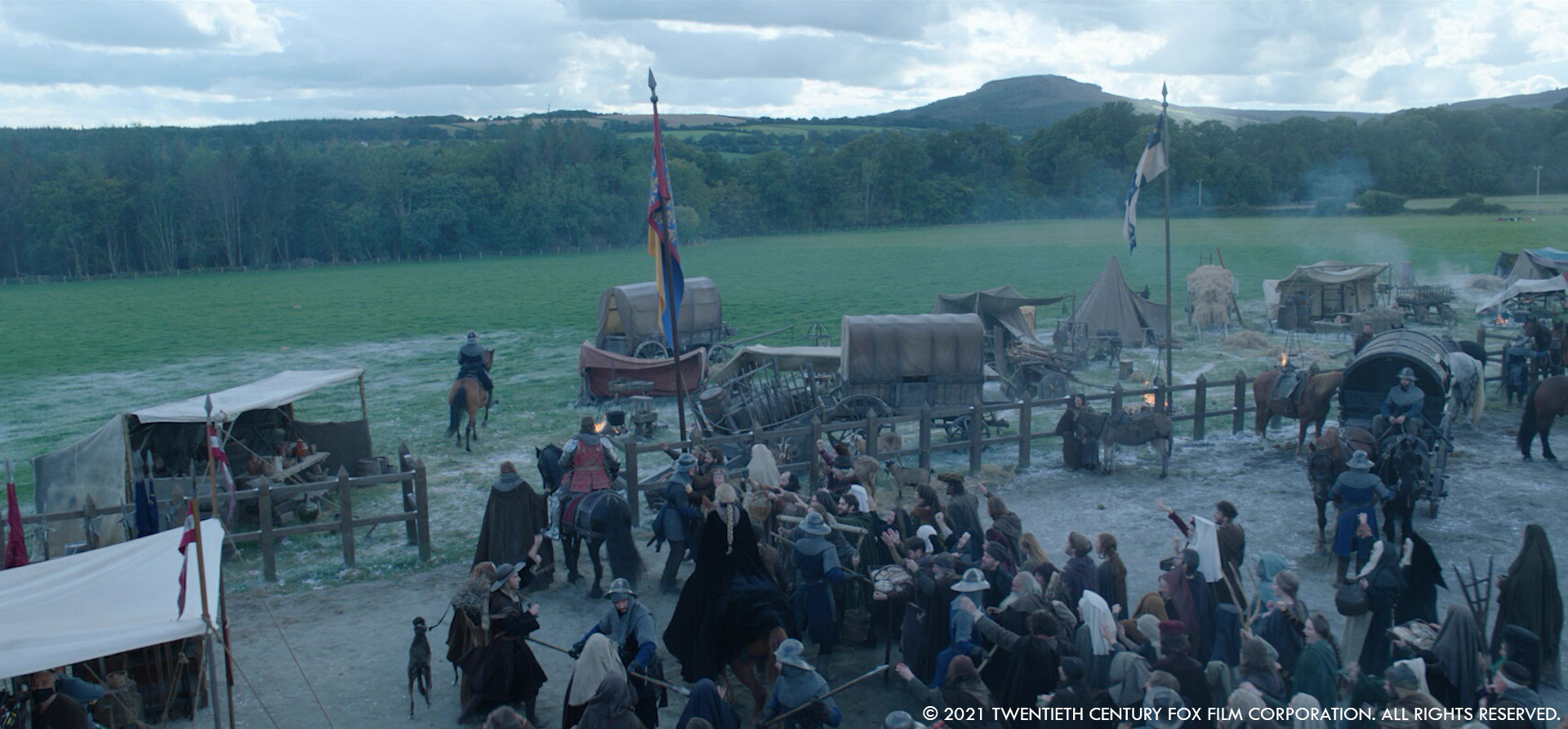
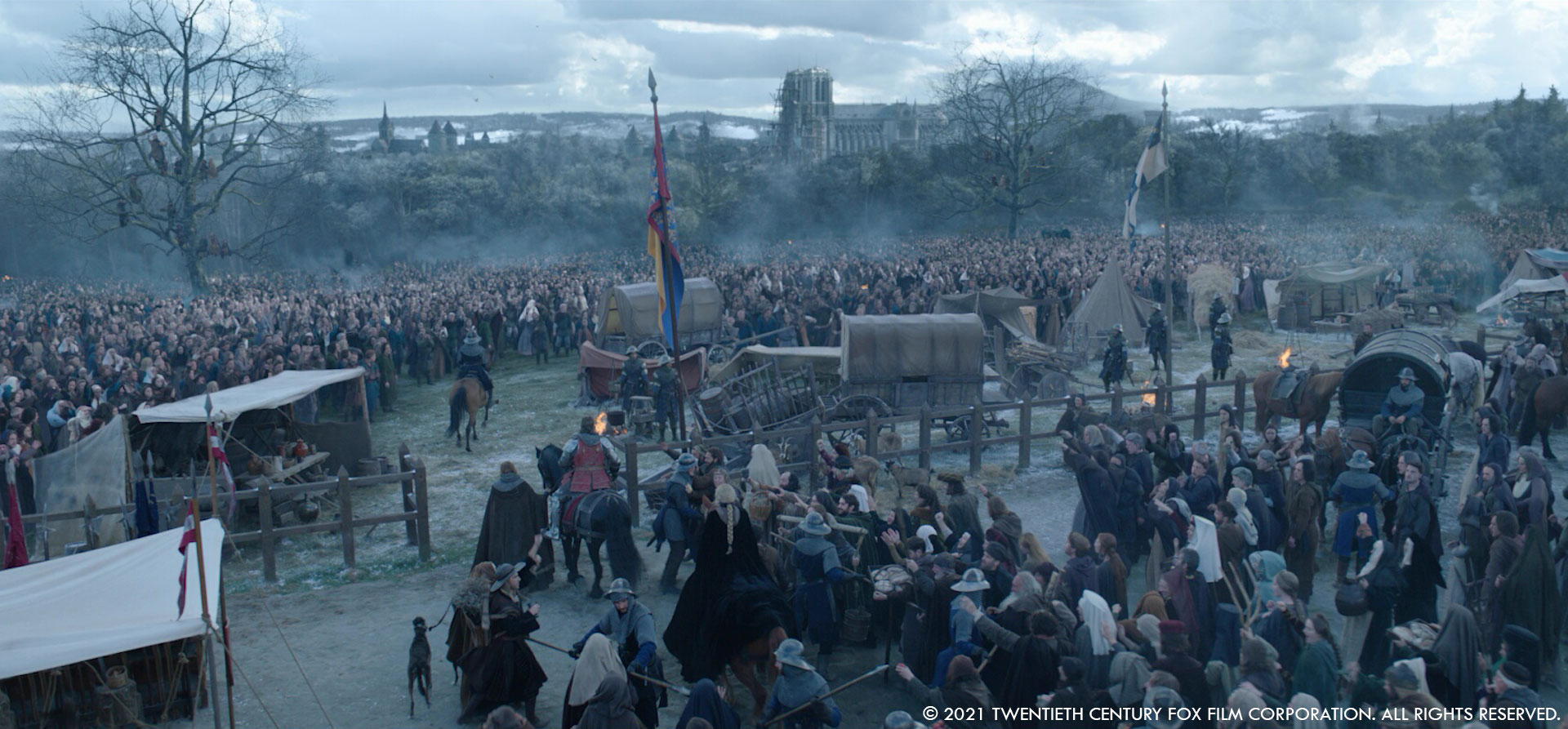
The cinematography has a really special look. How does that affect your work?
Yann: When we received the first shots, we reviewed them and I remember being impressed by the cinematography, but something I couldn’t put my finger on was bothering me. After some time, I realized that the depth of field was insane! Most of our shots were shot at F8. It meant that there was little defocused area, and everything was in focus. So, everything we did had to be sharp and detailed! It affected our work a lot! But it’s not often that you’ve got the chance to work on images that look different than the usual.
Kristina : Yes – our team was thrilled when they saw the first images of the film, as they were already looking gorgeous without any VFX or DI. This does not happen on every show. Our challenge was to enhance these images with our work and make everything blend together in a natural way.
Which location was the most complicate to extent and why?
Yann: To me, the duel sequence was the most complicate one to extent because it required having all the different VFXs techniques blended together in each shot. Everything was a mix of 2D crowd, CGI Crowd, FX, and set extension. Whatever you were doing or adding on one shot had multiple consequences on the rest of the sequence.
Romain: Yes, the duel sequence was difficult to extend mainly because we had to put people right behind the walls. They were too close to use CG, so we used people shot by production against blue screen as 2.5D elements. The lighting conditions on these people who stood in front of bluescreen and the various camera movements in the sequence made them quite difficult to integrate in terms of color and parallax. It was a long process and it took a lot of iterations to put them properly behind the walls.
What was your approach to recreate Paris?
Yann: I remember Gary Brozenich (VFX Supervisor at MPC London) telling us to forget our Parisian feelings! That was really interesting because as a Parisian you have a pretty precise knowledge of the town layout. We had to alter our vision to make it work story-wise, and it was really humbling to understand that story comes first.
Tchook: We based our research on a 1422 map of Paris. That gave us the raw position of the main buildings. The main challenge was to adapt the city skyline as Carrouges returns to Paris and adapt the crowd to Paris. At the end, we had to make some historical concessions in order to be consistent to maintain continuity in the roads for the Paris sequence.
Mark: The overall feeling and framing was explored by the environment team in the concept stage. As the CG team, we then went and fleshed that out. The biggest challenge was sticking to the feeling of medieval Paris (not so planned) while still retaining a sense of structure to the way the city was put together. On top of this, there was no single Paris across the film, there were a few different versions we had to make depending on the sequence to match the story or framing.
Romain: On all buildings and shots, we systematically used CG with projected paint over to add snow and other small details done by Tchook’s team. The MPC pipeline integrating deep data was a big help to keep this process relatively simple.
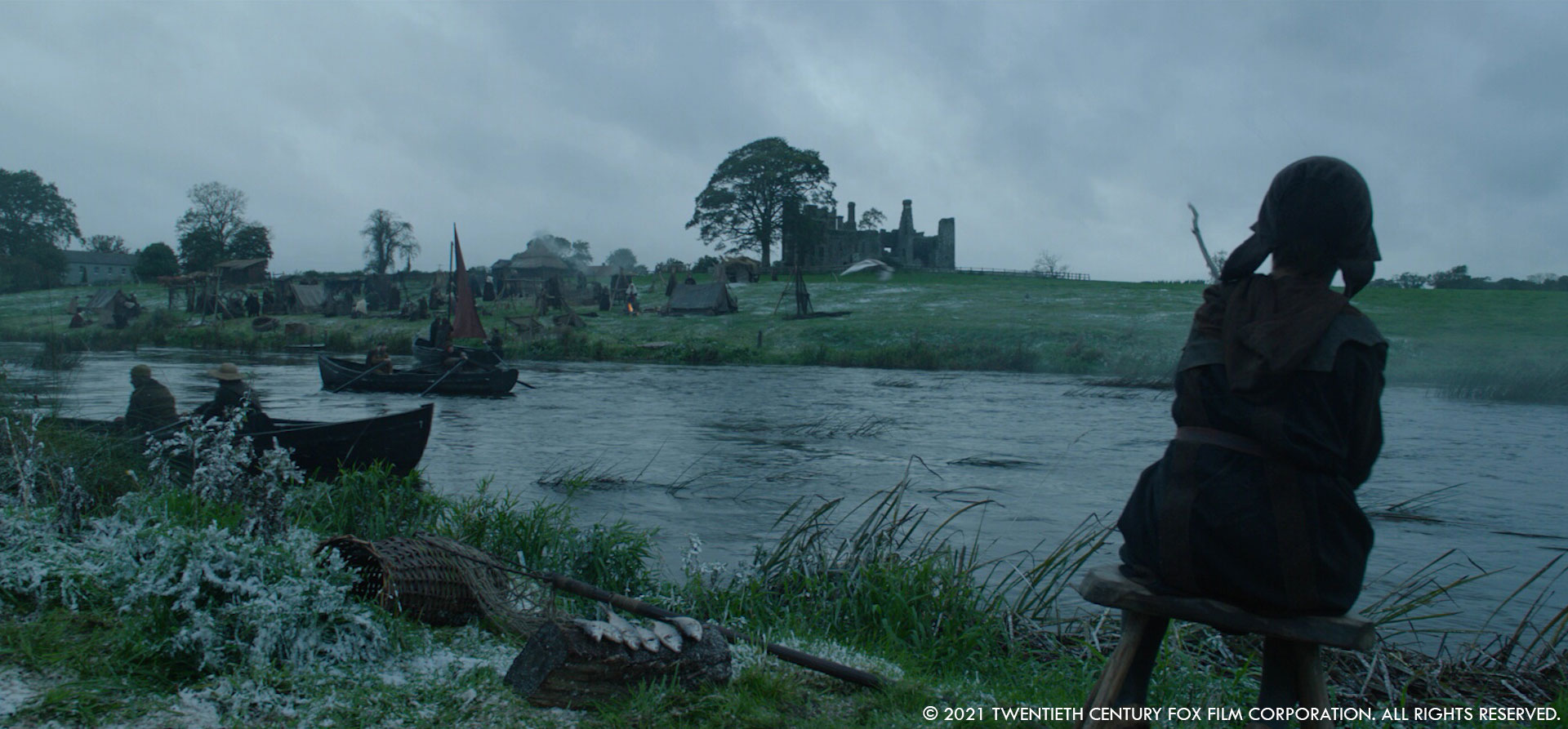
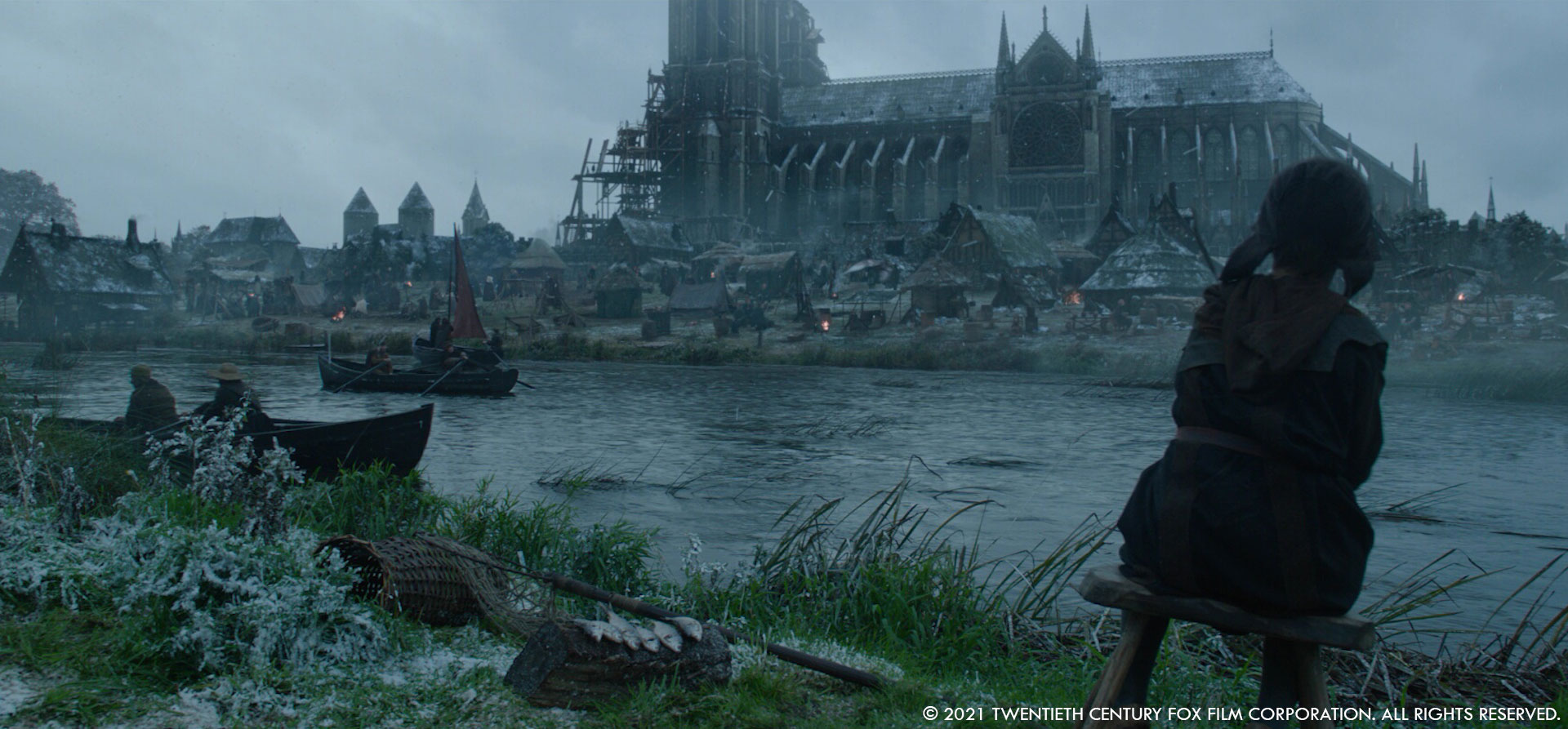
What kind of references and influences did you received for Paris?
Yann: Gary and his team provided a medieval map of Paris that we used as a layout. Gary also did a rough concept art of Paris, and we used that as an overall guideline.
Tchook: So, we made a lot of concept design and mock-ups in Unreal Engine to create and propose our Paris. We sent Gary some art and they asked us some modifications. We were quite free to propose some ideas for Paris streets.
Mark: I can only say that we have one of the best views over Paris from the studio windows and rooftop. So, to rest the eyes from work on The Last Duel, we had the Cathedral of Notre Dame of Paris just right in front of us, which kept inspiring us all along the project. We couldn’t avoid paying a tribute to this monument. We had her on our monitors and in front of our eyes all the time!
Kristina: Indeed, having our offices in the heart of Paris and being able to contemplate the Cathedral of Notre Dame during our breaks created a special atmosphere. Working on this show gave us another point of view on our city and certainly made us rediscover it in a pleasant way 🙂
Can you explain in detail about the creation of Paris?
Tchook: We made a library of low poly building and star building in order to have real-time concept in Unreal Engine and build. That means that we could have a consistent world, propose some framing very quickly and add modifications in several axis if needed. After that the CG team built the scene.
Mark: The main concern from the technical side of building Paris was getting variation into the city without exploding the budget. We started with the base houses from the concept stage and made a sort of « lego” set of a house (modular walls, windows, roofs and chimneys) which we textured up. We created a few variations of houses from this, then went about dropping them in to some neighbourhoods, which were then used to make the city. We then did a pass of additional houses with the « lego” set to break the repetition, and relied on compositing to add further variation with various ID passes. There were some very long nights spent by some of the artists towards the end of the project, adding in layers of fine detail to make the city feel alive, and some pretty heavy scenes to wrangle as a result. I really have to thank the team for pushing so hard on all the different versions of Paris because there was a lot to do.
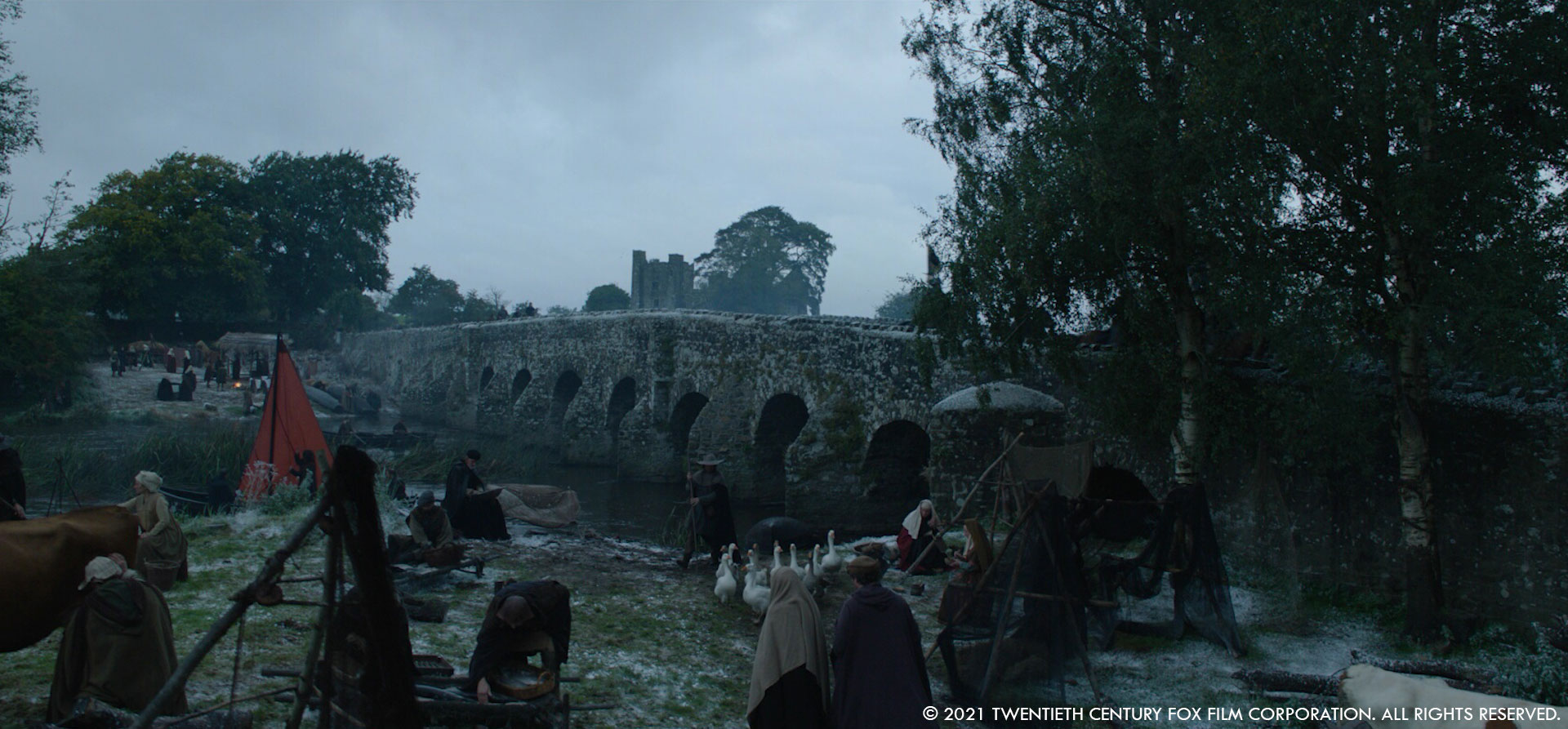
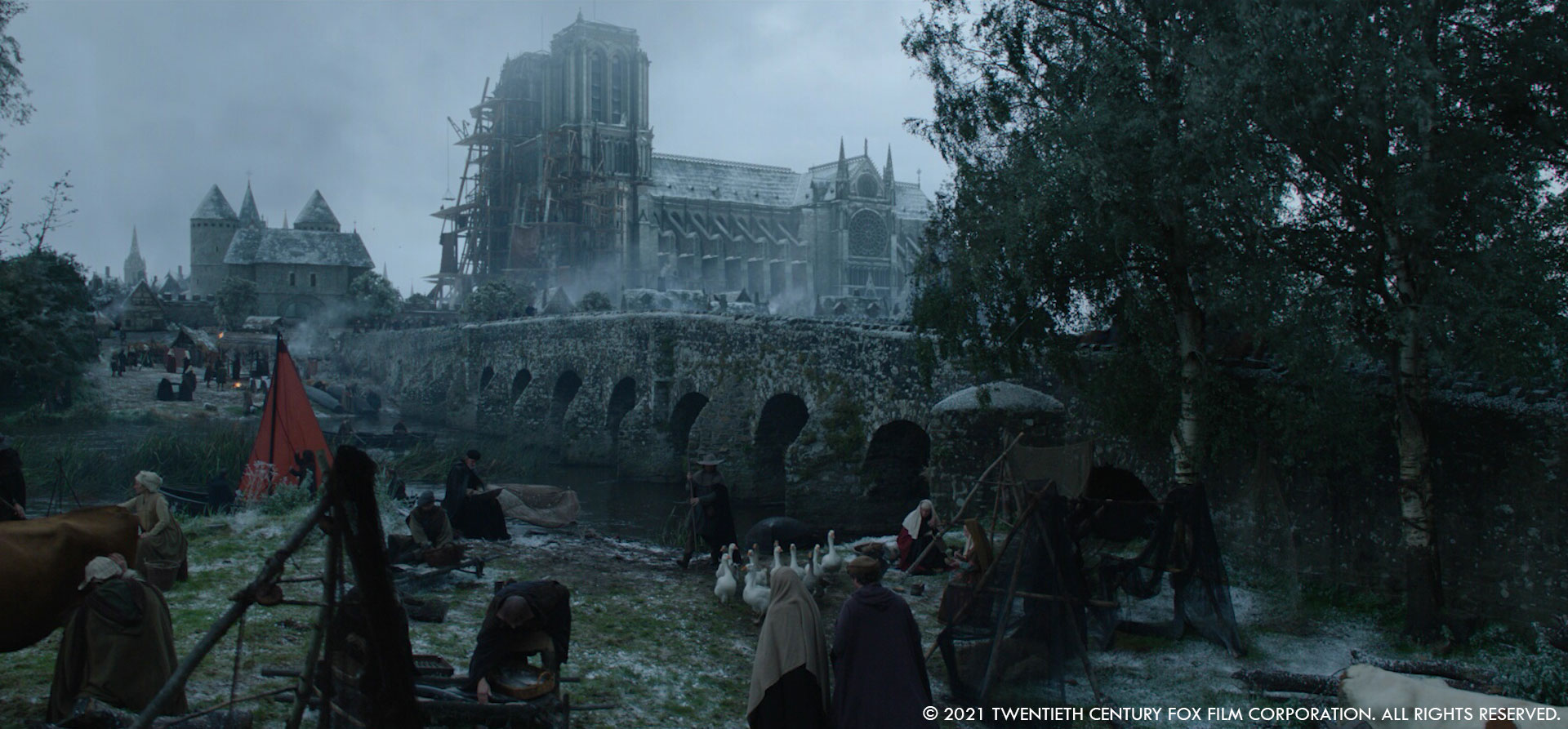
How did you create and animate the crowd?
Mark: We used Houdini to generate the crowd, using a collection of people we built to match the extras from on set, paired with animation from our animation library. There was a load of procedural randomisation in the agents, as well as in the animation that they picked up, sometimes with scattering controlled by maps and others directed by paths. We went through A LOT of versions getting the distribution to feel natural, adjusting the speed of movement to feel correct, as well as matching the animation to the acting of the extras in the plate or reacting to the action in the foreground.
Can you tell us more about your work on the impressive duel?
Tchook: We provided a lot of effects on the duel site. The film was shot in spring, but the action took place in winter – so we had to reconstruct an environment for every shots, angles and backgrounds.
Romain: For the distant background, we chose specific frames that were painted over by Tchook’s team and reprojected them using proxy geometries and 3D cameras. The nearest trees were made by Mark’s team with great details and we populated them with people combining deep data from the CG and 2.5D cards with green screened people. The same process was used for the flags: we made a big 2.5D Nuke asset using flag shot against greenscreen with a locked off camera. It was easily re-usable in every duel shots. We even shared this Nuke asset with our colleagues of MPC Film Montreal who also worked on the film.
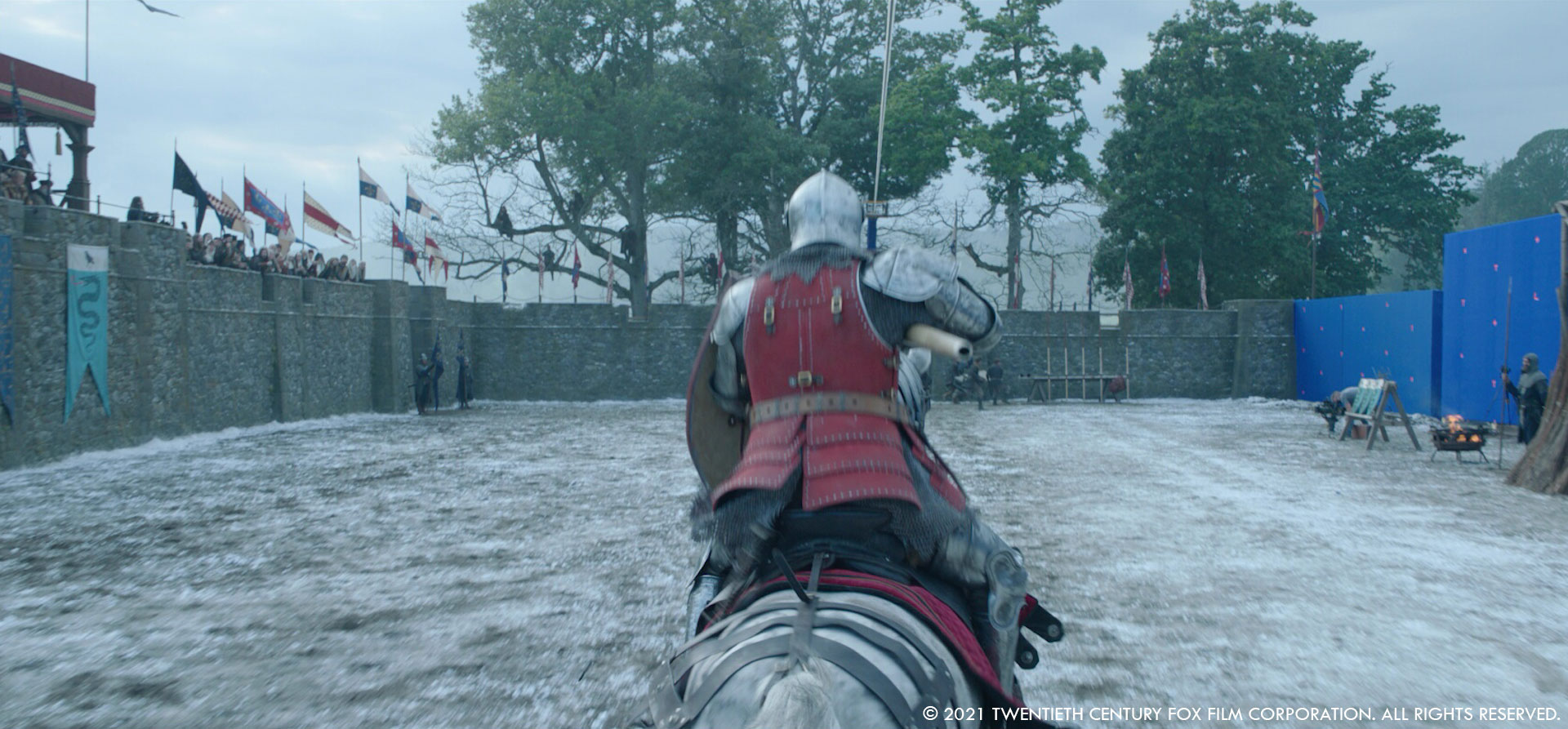
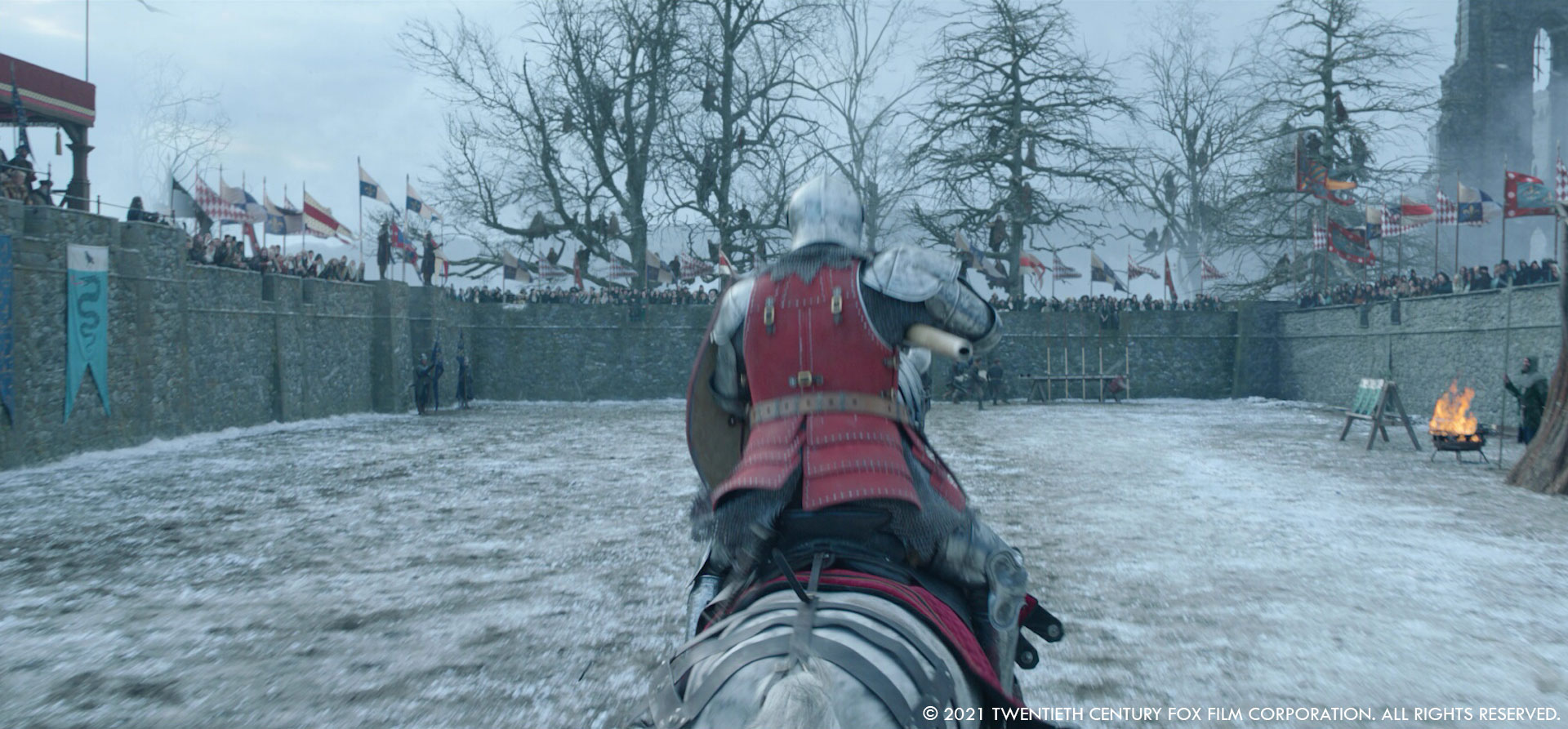
Which sequence or shot was the most challenging?
Yann: I think the opening shot was the most challenging one. Mainly because it was a drone/top shot, and these are always nightmarish. It is so difficult to achieve a feeling of scale. While looking at the original plate, we realized that everything was looking like toys and that this one was going to be challenging. This is the last shot we completed (and one of the first we started to work on). The team on that shot was nicknamed « the Groundhog Day », every day they showed up to work on the same shot!
Tchook: Yes, definitely the first shot. The camera on a drone starts in the middle of the sky and pans over the valleys and the city of Paris at Middle Age times and then approaches the duel site. It was shot in spring with a lot of green trees, so we had to rebuild the terrain, design some dead trees and populate all the trees and small villages in Clarisse. After that, all layers were hand-painted in a 12K+ resolution photoshop document. If I’m not wrong, this represents more than 100 hours of painting.
Kristina: I have to agree about the opening shot, proof being that this was the very last shot we delivered on the show. It was not always easy to jungle between so many different departments involved in this kind of shots, as every step had an incidence on the another and could quickly generate extra work.
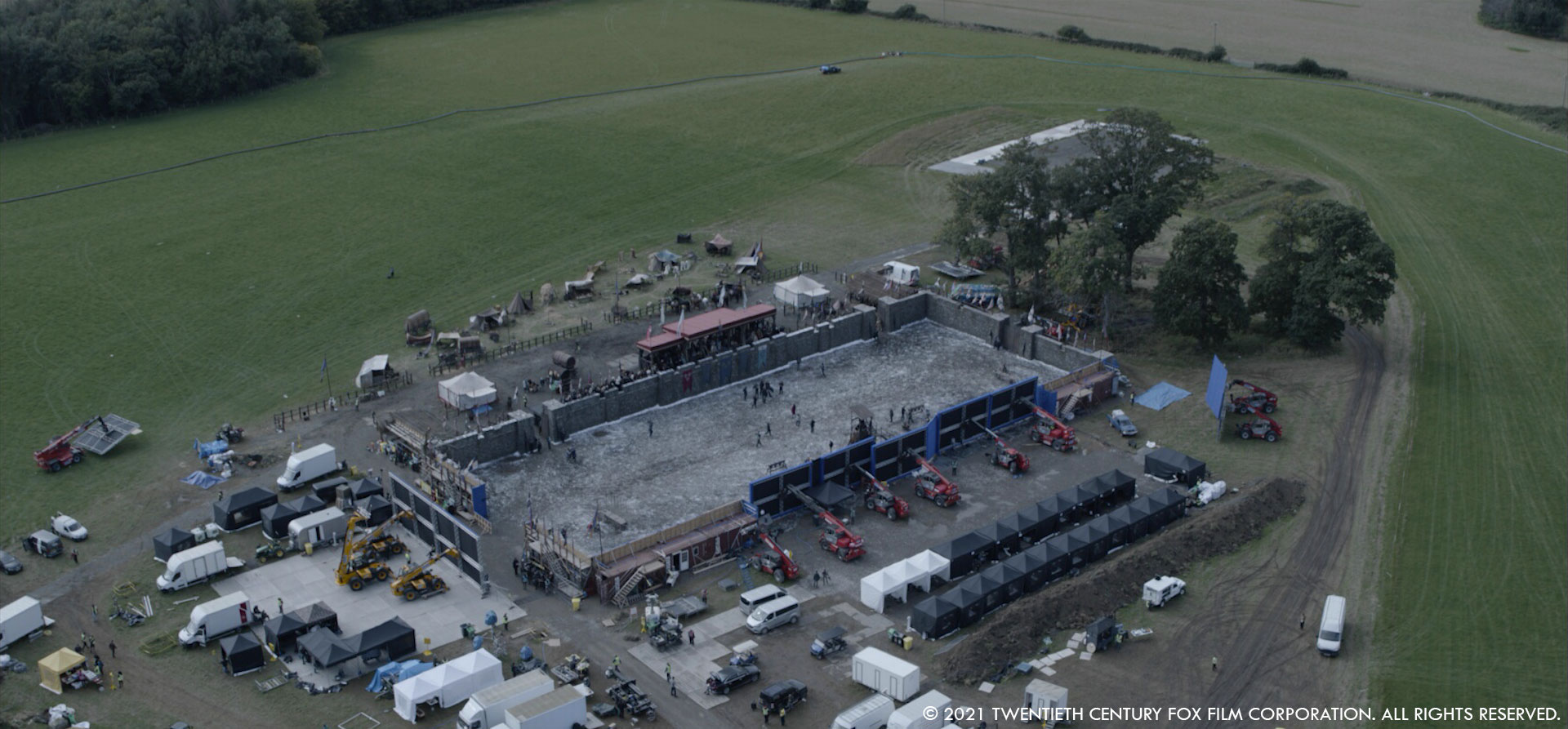
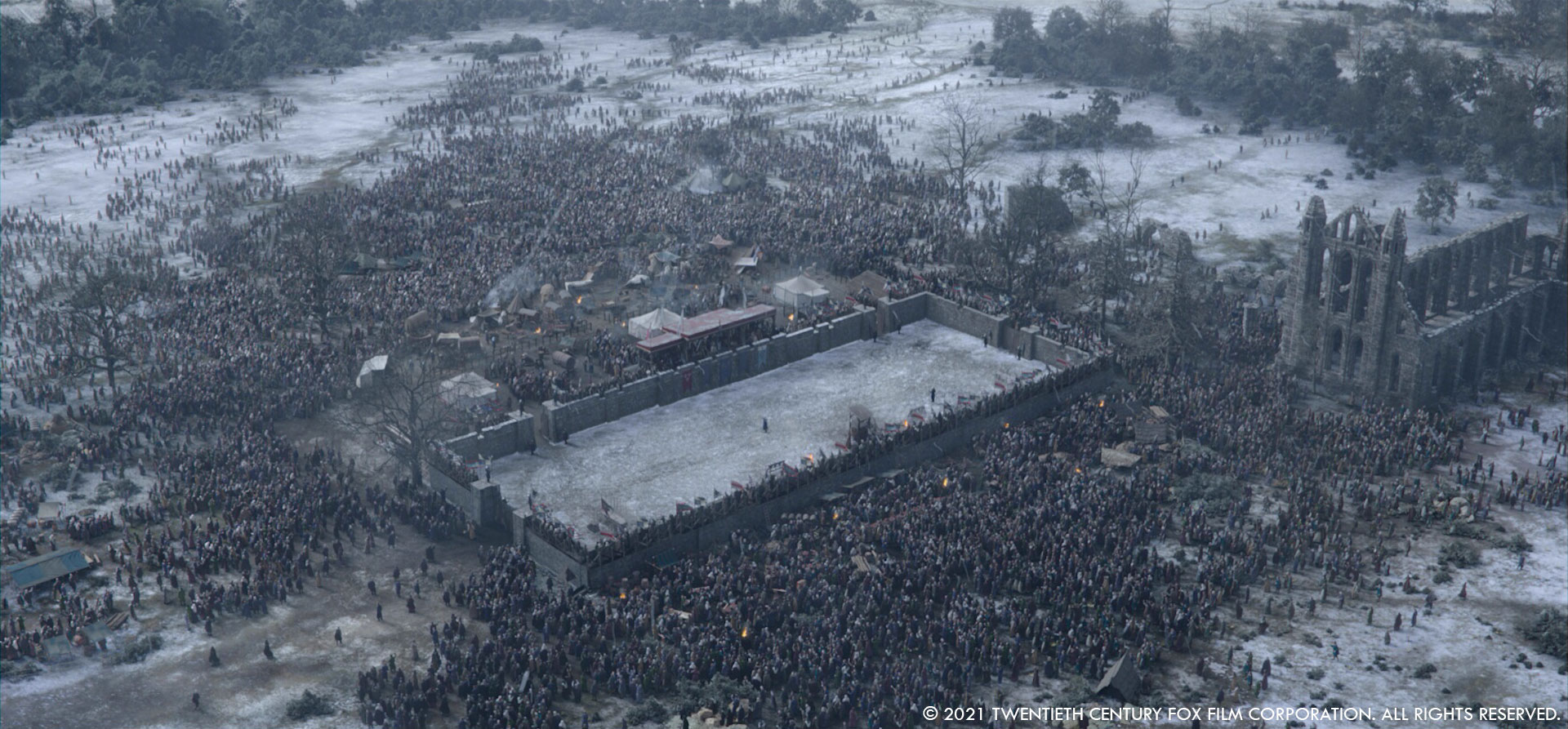
Did you want to reveal to us any other invisible effects?
Tchook: There is one, I call it “the auto repair shot”. We took the shot and dismantled it from A to Z and rebuilt it. It’s one little shot where you have a man with some kind of trumpet near a castle with the sun in his back. So, we spot the exact location on Google Map and invented a camera. We then used Maya to get some elevation on the terrain, and we populated with trees and dead vine in Clarisse.
Kristina : In addition to more obvious CG shots, there were indeed many invisible effects, such as adding snow (lots of it!), flags, tents, removing modern features or adding people sitting on trees in the duel scene.
Is there something specific that gives you some really short nights?
Kristina : Working with Ridley Scott is a great honour but also gives you a big pressure to make everything work. Sometimes, it can translate into a long night. However, remembering who you’re working for gives you the motivation to get up in the morning and face new challenges.
What is your favourite shot or sequence?
Yann: Not really from a VFX achievement point of view. But in all our shots, Jodie Comer is tense, not smiling. We worked on the last shot of the film where she smiles, and it tells a lot about the story. I loved that shot. We opened and closed the film. Such an honour!
Kristina : My favorite ones are a few establishing shots where you can see the Cathedral of Notre Dame and bustling Paris streets of 14th century. I’ve always been fond of the medieval atmosphere and tried to imagine how the everyday life was in a medieval city like Paris. I enjoyed a lot working alongside my team to create these scenes and reconstruct a piece of the medieval life as truthfully as possible.
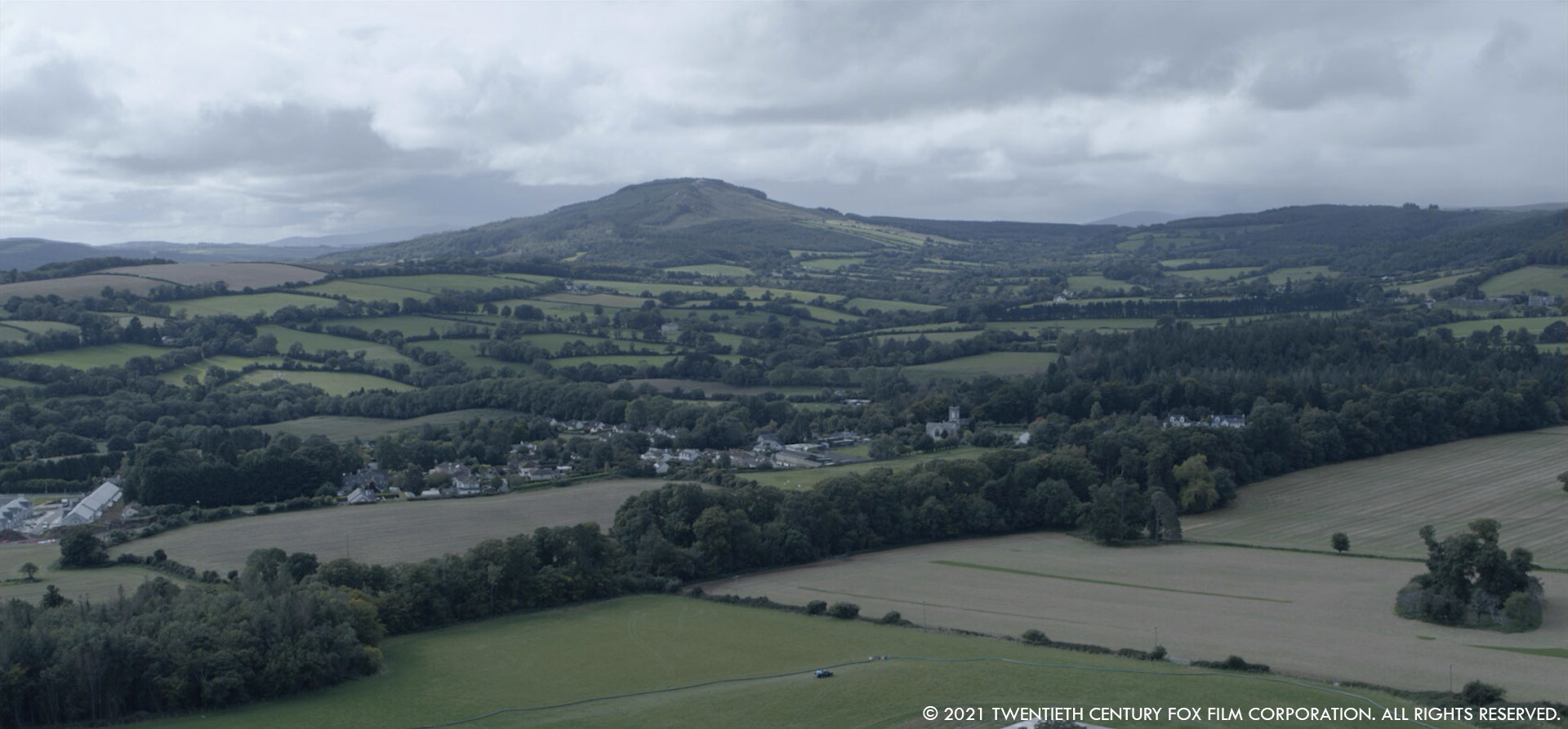
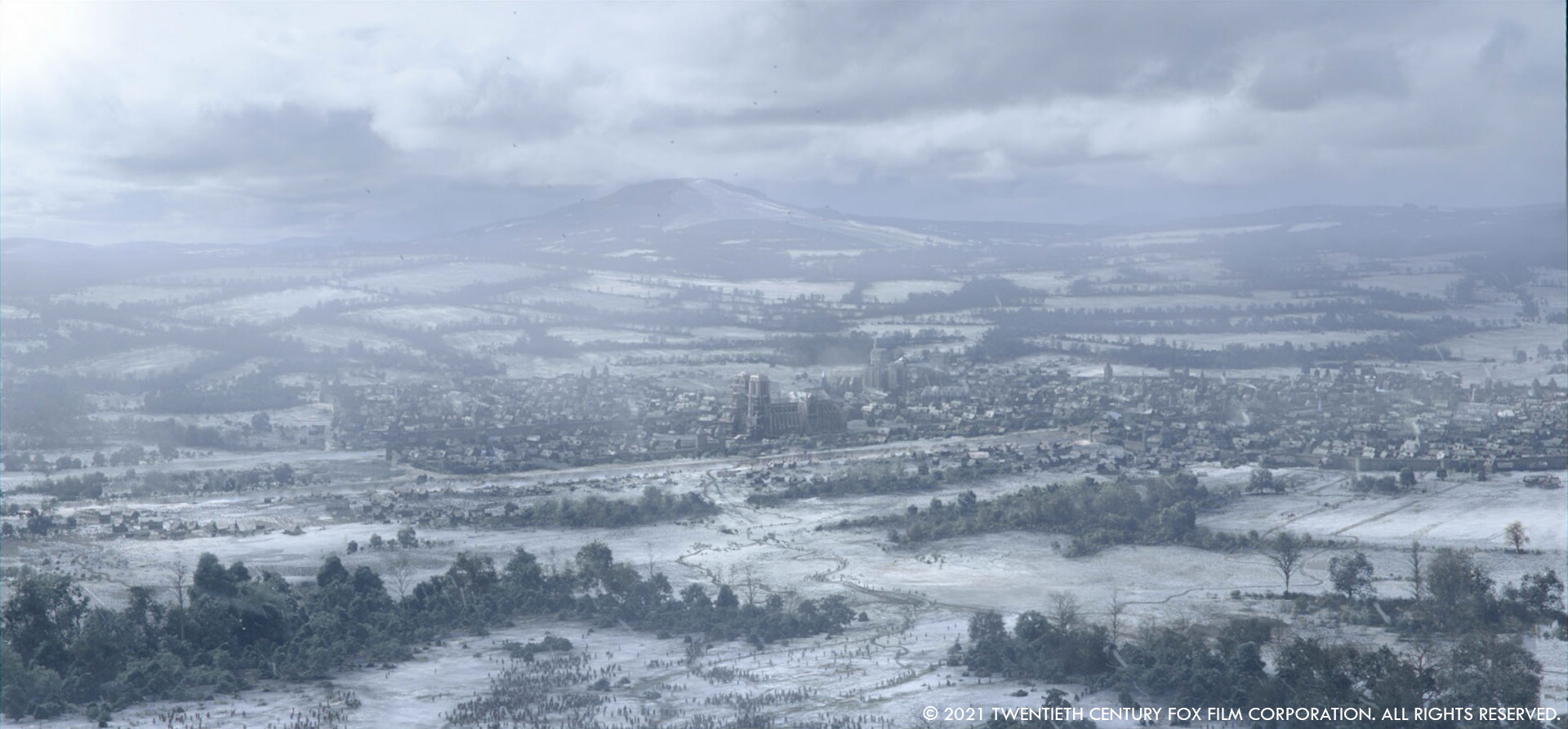
What is your best memory on this show?
Yann: It’s a general memory and not a specific one. I loved the way we all worked together trying to achieve the best possible result. It was an honour to work with such a gifted team.
Tchook: A note that Mr. Scott sent us, that was saying, in his words, that he was happy about the concepts of the road to Paris Sequence. And when I started the first shot of the show, I said to myself: “Oh my god, I’m making a Ridley Scott film”.
Mark: Seeing some of the CG rendered out and stuck into the plate for the first time is always kind of mind-blowing for me, and it was the same on this project. It’s always reassuring to realise that your team is killer and to be able to tell yourself “We’ve got this”.
Romain: when the last shot was delivered and approved weeks after the rest of the team had finished their work and being able to say to them “all shots are finals! you all rocked guys!”.
Kristina: We had an incredible team who put lots of effort into making everything work and it was pleasant to work alongside them every day, despite the challenges that you can except from this kind of project. And it was a great feeling to receive very positive feedback from Mr. Scott in the end and realize that we’ve really made it.
A big thanks for your time.
WANT TO KNOW MORE?
MPC: Dedicated page about The Last Duel on MPC website.
© Vincent Frei – The Art of VFX – 2021






